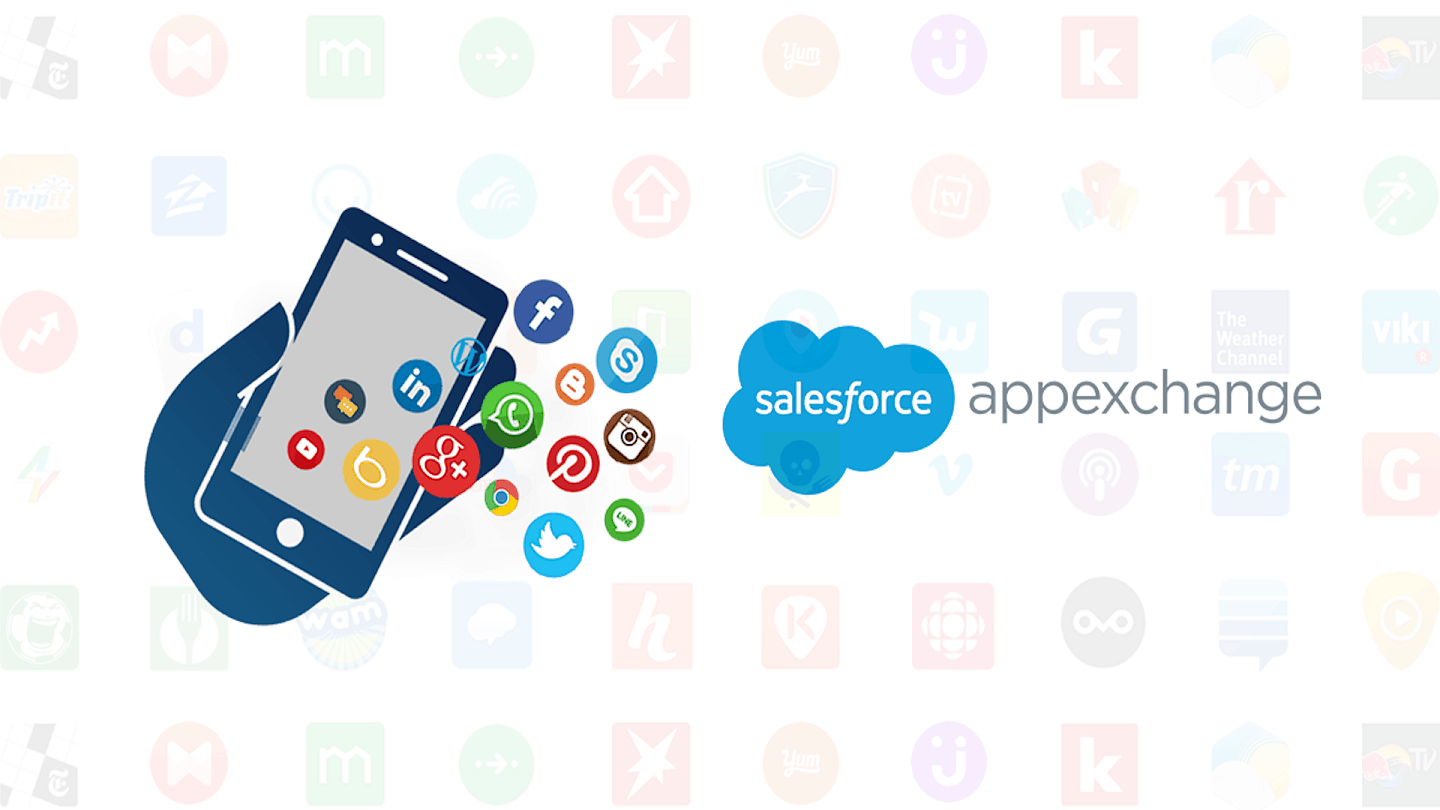B2B customer relationship management software is evolving at a faster pace than ever. New technologies are emerging (advanced automation, machine learning…), which are revolutionising B2B CRM practices and usages.
What all these new trends have in common is the emphasis placed on maintaining a lasting, sustainable, long-term customer relationship. If customer relationship management has always been part of a medium/long-term perspective, new technologies and new uses allow this basic trend to be accentuated.
Let’s take a look at the TOP 10 trends in B2B CRM.
Sommaire
#1 The development of subscription business models (from acquisition to retention)
The old model based on one-shot sales is changing. The objective is no longer to maximise sales at a given moment, but to create a lasting customer relationship synonymous with repeated purchases over time. It is time to project, to focus on lifetime value and to generalise subscription-based business models. The SaaS software industry, based on the subscription model, will be worth $162 billion in the next two years. In the US, there are already 5.7 million box subscribers. The subscription model has already moved out of its original territory: media and services. All economic sectors are affected by the subscription wave.
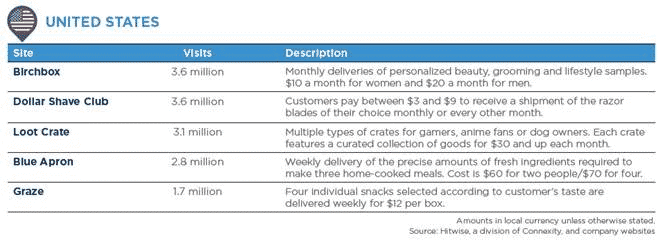
This trend makes the sales process more complex than ever. Revenue generation is no longer just a matter for sales people. All departments are now concerned by this concern, by this objective: from marketers to product teams. All of the company’s businesses, through their activity, have an impact on the bottom line:
- The marketing team in producing educational content to address customer issues and accelerate progress through the conversion funnel.
- The Customer Success Team, whose entire activity is aimed at limiting customer churn as much as possible and maximising revenue through cross-selling and upselling.
- Product teams seeking to design products with a unique user experience that generates word of mouth.
Everyone in the company is involved in customer relations. Sales strategies are no longer driven solely by the objective of customer acquisition. The real driver of growth is now retention. We have stopped thinking that more customers = more revenue. Revenue growth comes from existing customers rather than from new ones.
Discover 20 high potential lead generation techniques.
#2 From CRM as a sales cash register to CRM as a holistic customer relationship management tool
As retention has become an important issue, sales processes are becoming more complex. Collecting leads, moving them through the pipeline, waiting for them to convert: this linear process has become too simplistic. The sales processes of the future will be cyclical. They will require repeated, rich, dense interactions with customers. They will take place over months, over years after the first sale. The performance of sales strategies will be measured less by the data generated (lead scores, conversion rates, volume of deals) than by the quality of the experience generated. This will require salespeople to have a broader skill set and a deeper understanding of customers. Being good on the phone and good at selling will no longer be enough.
#3 The B2B CRM will become the tool of all employees in contact (directly or indirectly) with customers
Everyone in the company is potentially in contact with customers, directly or indirectly. But, historically, CRM software has been designed and thought of as a tool for the sales force. In the years to come, we will see a de-piloting of CRM systems. CRM systems will become customer relationship management software in all its dimensions, in all its phases. CRM will make it possible to circulate all customer information to all employees in the company. Integration technologies will multiply, making it possible to integrate all customer data and a wider range of functions into the CRM. CRMs will become more interactive. Reporting capabilities will become richer.
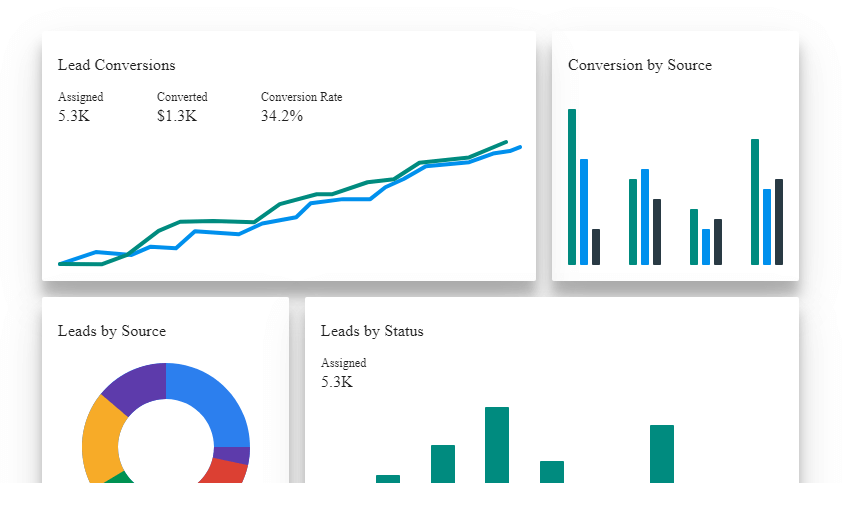
Sharing data between marketing and sales teams, via reporting, will strengthen relational and sales performance. The B2B CRM will become the operator of the integration and alignment of marketing and sales.
Not yet equipped? Discover our comparison of the best B2B CRM tools.
#4 More conversations, fewer forms
Today, lead generation processes all look alike and follow the same pattern: offer high value-added content (white papers, ebooks, infographics, etc.) in exchange for filling in a form. Content for data. There is a nonsense in this way of doing things: you ask your prospects to give you information (often a lot of information), you bombard them with questions before even offering them anything, before even answering their questions. In the years to come, strategies will change. Companies will seek to give more information before asking for it, via chatbots for example. Cold, inert and aggressive forms will be replaced by conversations. It will be the customers who decide whether or not to enter the conversion funnel.
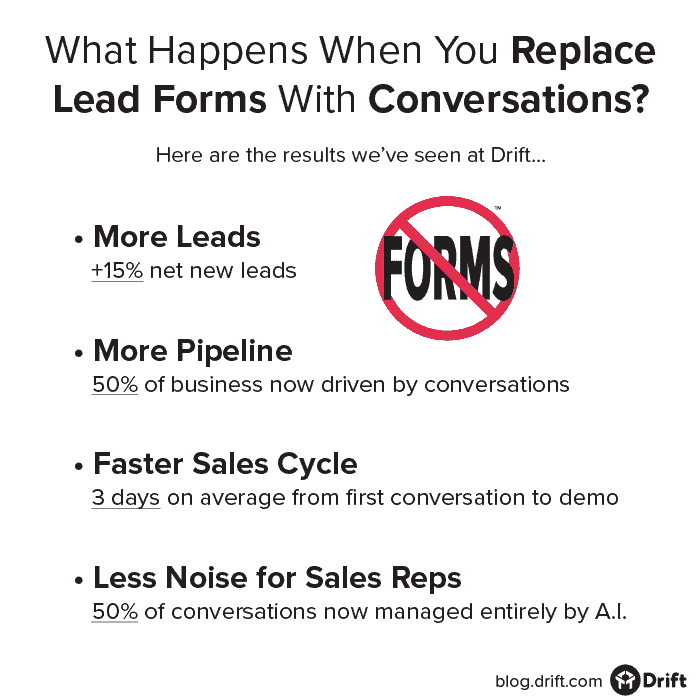
Discover our 20 tips for getting really good at cold calling.
#5 The B2B CMS will allow to centralize the data generated by the content marketing
In a world where information is just a click away, online resources (blog articles, case studies, etc.) play a fundamental role in the purchasing decision. Producing this type of content allows you to learn much more about your prospects, to identify their problems and needs. For example :
- If a prospect reads and re-reads a blog post about customer acquisition costs, chances are they are spending too much money on new customer acquisition.
- If another prospect downloads a case study comparing your product to those of your closest competitors, they would probably benefit from a phone call from you.
The problem is that the data generated from online resources is often scattered across dozens of applications and channels: blog post analytics are accessible in Google analytics while case studies are stored in Google Drive…Even your communication with prospects is fragmented: social networks, livechat, email…
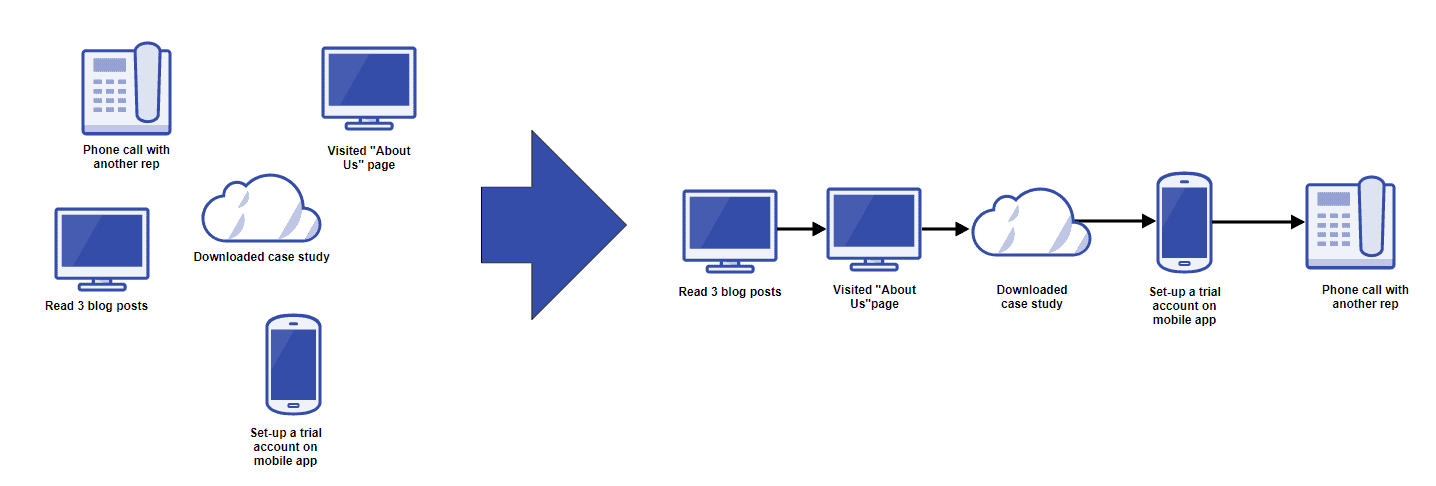
The more content you create, the more difficult it is to analyse and understand people’s actual behaviour. To avoid this situation, it is important to put in place real content management. This means :
- Create a “commercial CMS”: organise the production of content using commercial criteria: stage in the conversion tunnel, customer segment, product line, etc.
- Track how prospects engage with content: see which emails are read, which links are clicked…
- Identify the best performing resources, those that generate maximum commitment at the beginning of the business relationship.
Rather than sending out traditional email sequences, in the future sales people will make more use of existing customer data to create more personalised emails, share articles and case studies identified as performing well in the lead generation phase.
Find out which B2B lead generation strategies work best.
#6 Less information gathering during canvassing calls, less manual data entry
Prospecting and qualification phone calls are a source of frustration for both prospects and salespeople. Salespeople need to fill in the lines of their spreadsheets with information such as company size, length of service, position, company budget, etc. Prospects, on the other hand, want information about the product and often feel harassed by the sometimes insistent questions of their contact. Wishes differ. In general, no one leaves a prospecting call satisfied.
Advances in technology have made it possible to remedy this situation and set up a smoother, more flexible lead qualification process. Most of the information that salespeople need to qualify leads is available on the Internet (Google, LinkedIn, etc.), whether it is the size of the company, the position of the company representative you are contacting, etc. Web-based tools, such as Clearbit, can automatically retrieve all this information. There are even tools that allow this information to be integrated directly into the CRM contact sheets. These new tools make it possible to reduce the time spent on data entry and to limit the number of questions to ask prospects during calls.
#7 The arrival of video messages in prospecting emails
It has become harder than ever to successfully engage prospects. With over-subscribed mailboxes, prospects (almost) no longer read prospecting emails. Hot emails (sent following a specific interaction: a registration, a purchase, a request for information…) are read more. Their click rate is between 2 and 3%. Sending shorter, more personalised emails can improve the performance of emailing. But to get really significant results, more important changes are required.
One of the big trends these days is video messages. With tools such as Wistia, it has become very simple and fast to record short video messages and integrate them into emails with one click. This format allows you to really differentiate yourself from your competitors. Still very few companies use this format.

While video messages are a new format, the topics covered are quite similar to those of traditional emails:
- Presentation of the sales manager.
- Explanation of why the person is being contacted.
- CTA (e.g. appointment proposal).
Videos help to humanise part of the sales process. Wistia has managed to generate a 300% increase in click-through rates with video messages.
Find out how to set up and promote webinars to generate more leads.
#8 The irresistible development of automation in B2B CRM
Answering an email, scheduling an appointment, sending out sales proposals: all these tasks are time-consuming, eating up time that would be better spent elsewhere. More and more of these repetitive tasks without much added value will be automated in the coming years. It is the B2B CRM that will take care of personalising the emails and choosing the best way to send them.
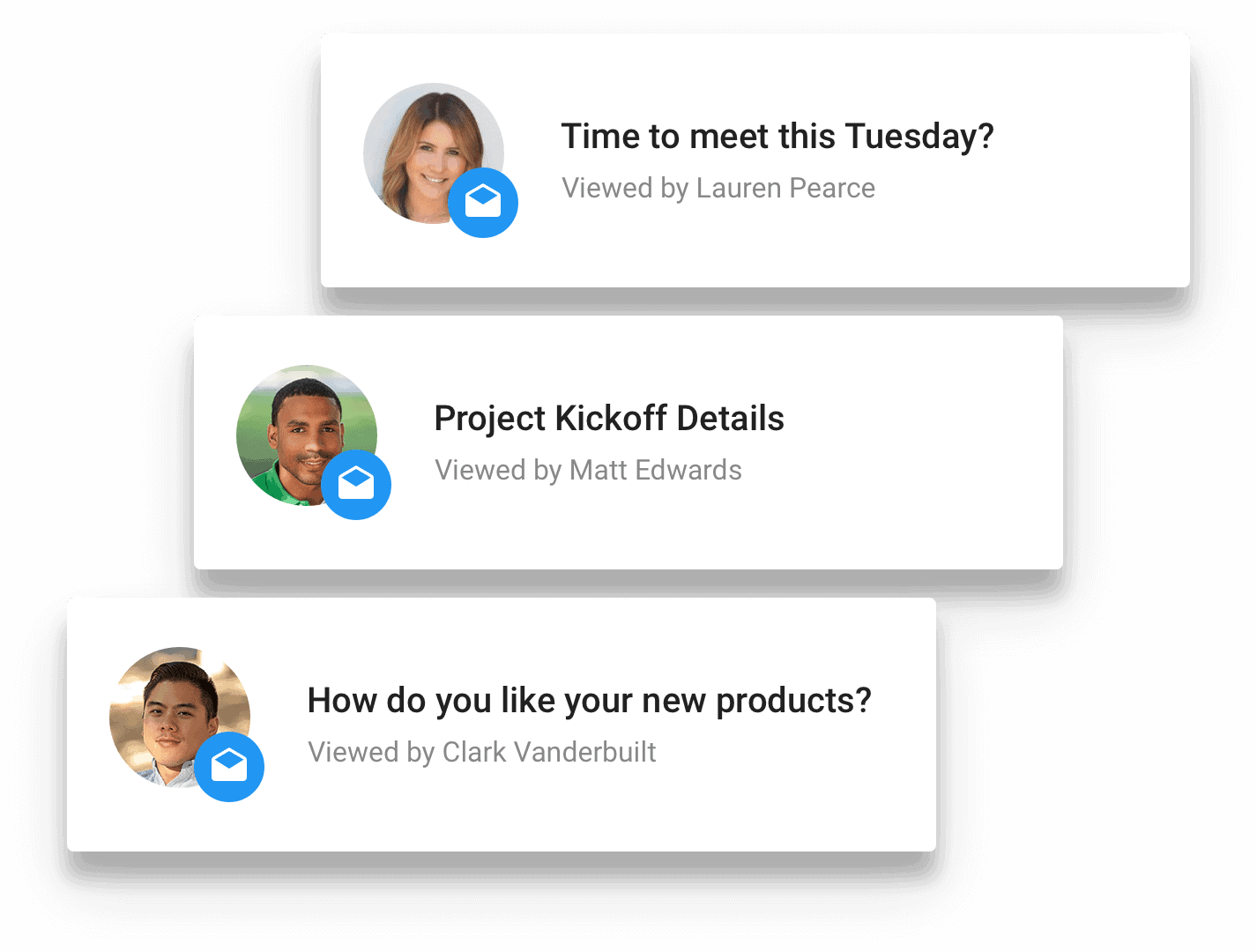
This will free up time for sales people, who can spend more time with prospects, developing listening and communication skills.
Discover 30+ tools to automate your sales prospecting.
#9 Pipeline management will become predictive
44% of salespeople think that their organisation manages the sales pipeline badly. No wonder. Having to track thousands of leads is a monstrous task, complicated by the often limited reporting capabilities offered by CRM software. In the future, more and more companies will implement predictive models for pipeline management, using machine learning algorithms to proactively identify and solve problems in the pipeline.
“No company can perfectly predict how much revenue it will make in any given month…There are too many variables to take into account. But perfection is not the goal. Predicting means getting close enough to make the right decisions”(Matt Cornson, Clearbit)
This means :
- Bring consistency to all the intent signals from prospects to move them through the conversion funnel at the right time.
- Predict revenue and predict how many prospects will turn into customers.
- Bring up updated lead data in reports with a few clicks.
Pipeline management in the future will cease to be a “reactive” process. Salespeople will be able to translate customer data into sales actions.
#10 The birth of the unified commercial stack
In recent years, we have seen a fragmentation of the technological landscape. Tools are multiplying with the development of SaaS software in particular. There used to be a handful of all-in-one CRM suites. Today there are thousands of specialised publishers.
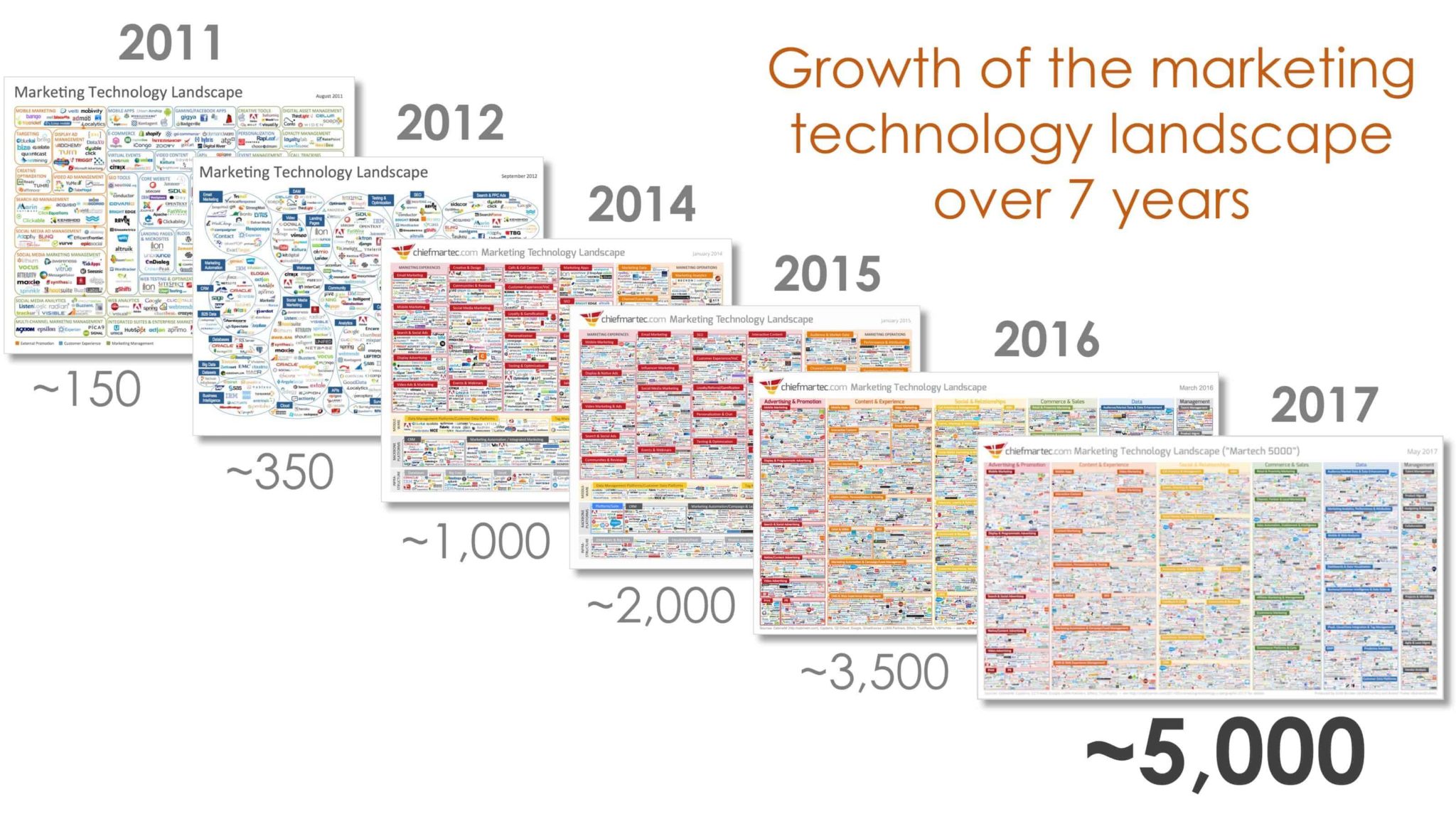
Faced with such a choice, sales teams seek to develop coherent stacks, to select the best tools in their field (best of breed) and to create connections between them. But this mode of organisation poses problems. Each tool has its own interface, its own processes, its own data. Data is scattered. There are too many applications to manage. We are seeing big changes in the technological landscape: a process of unification. We are seeing more and more tools integrating CRM features, for example. Some companies, for example, are choosing to use the Google suite to manage CRM (via Gmail, Google Drive, Chrome, etc.).
All these trends have one thing in common, they all have the same objective: to strengthen B2B customer relations. This is a fundamental trend. Faced with unbridled competition, the only way to differentiate oneself is to offer prospects and customers a strong relationship that is no longer synonymous with over-solicitation but with personalisation, listening and relevance. A customer relationship that lasts. The new B2B CRM tools and practices are all geared towards this goal.

